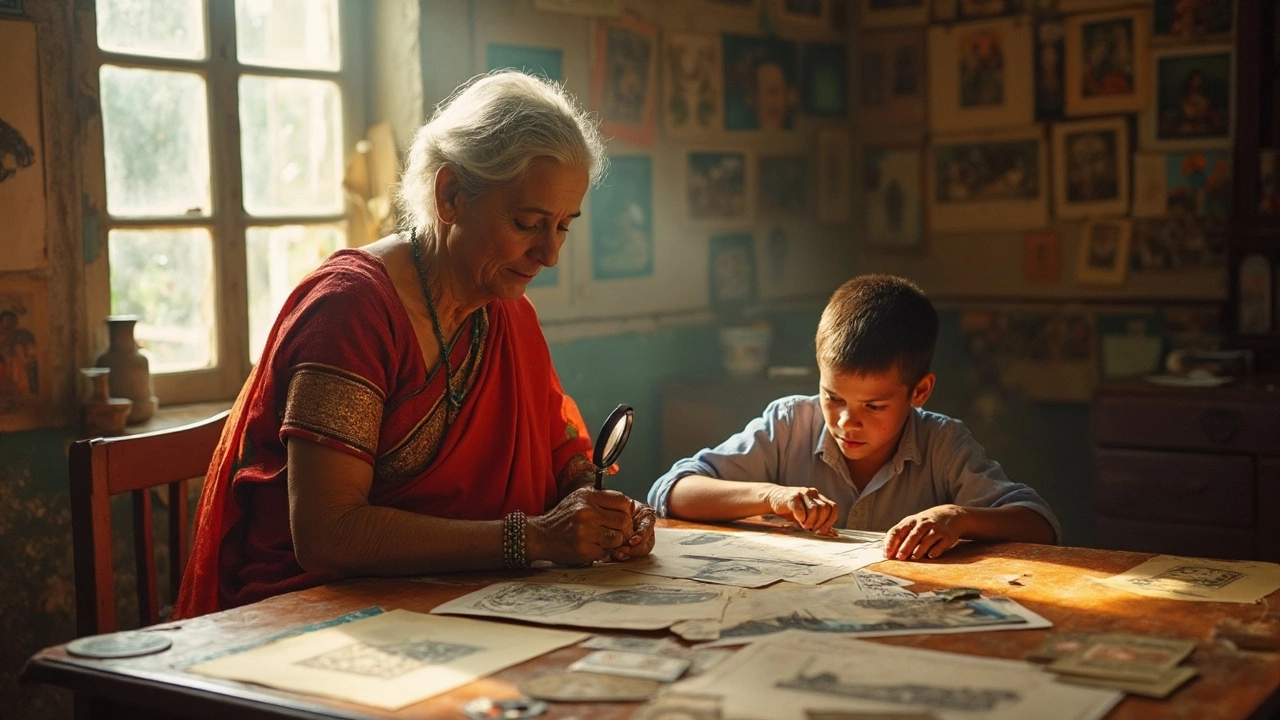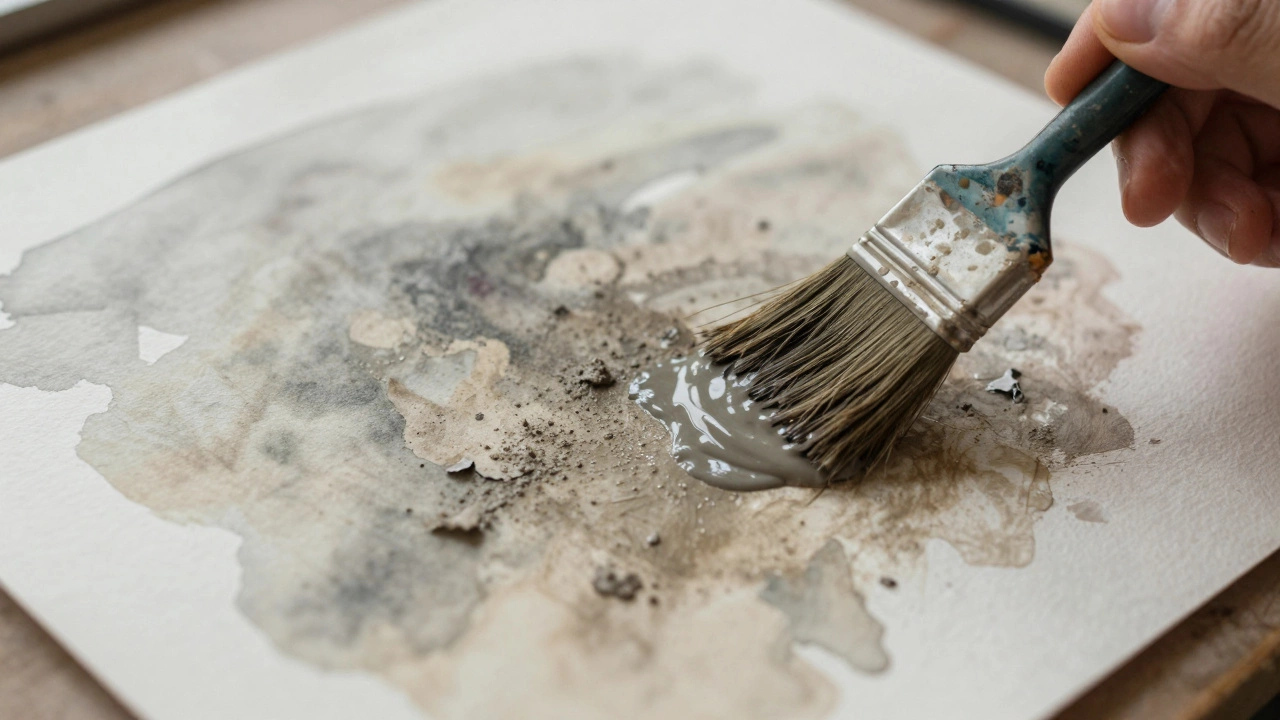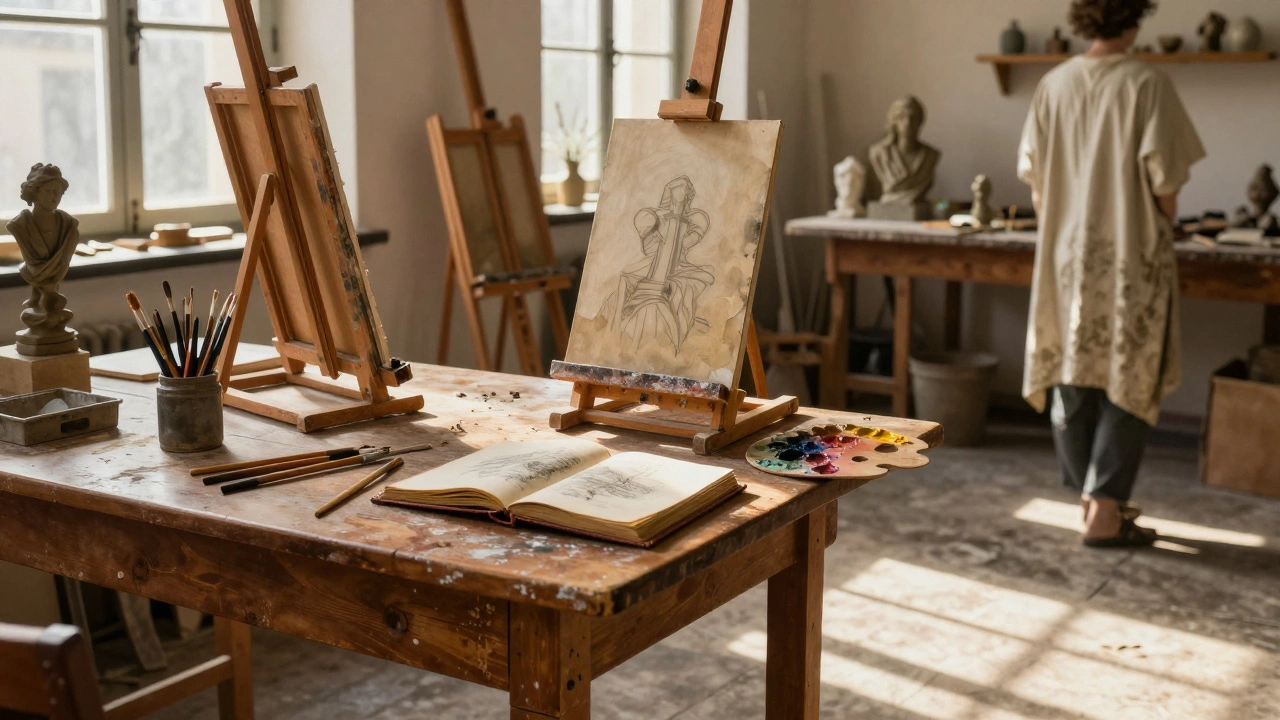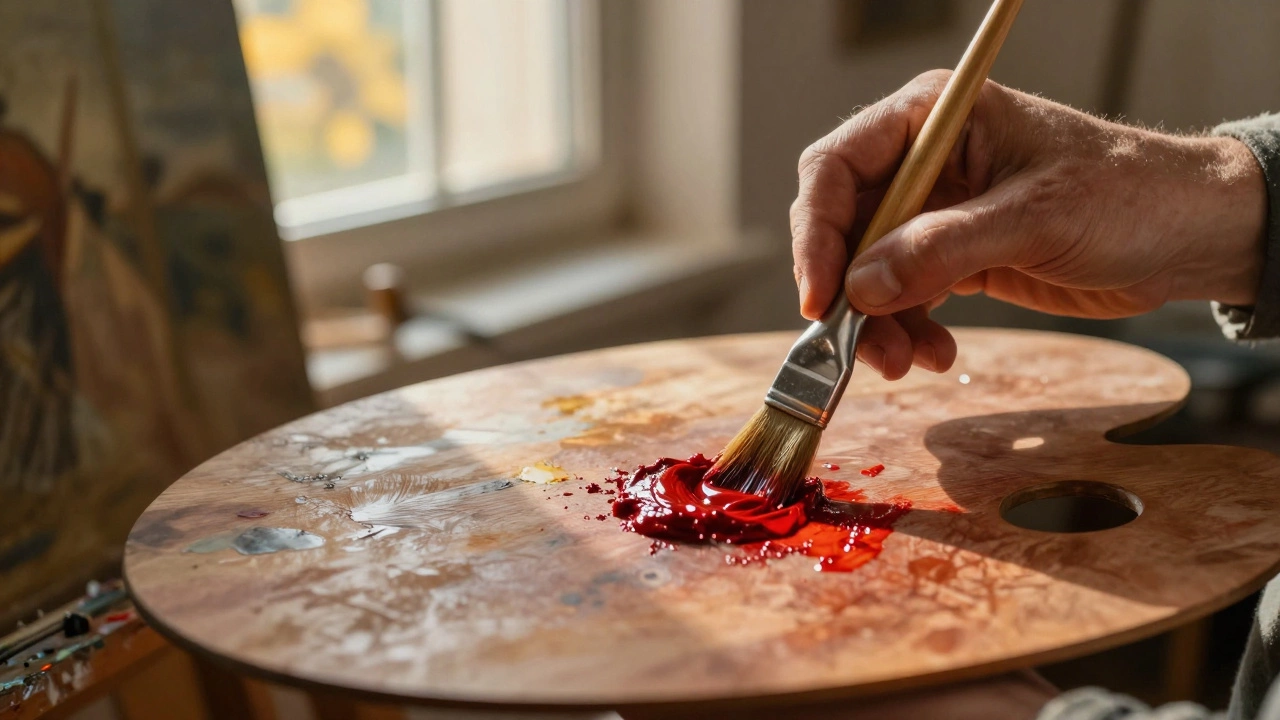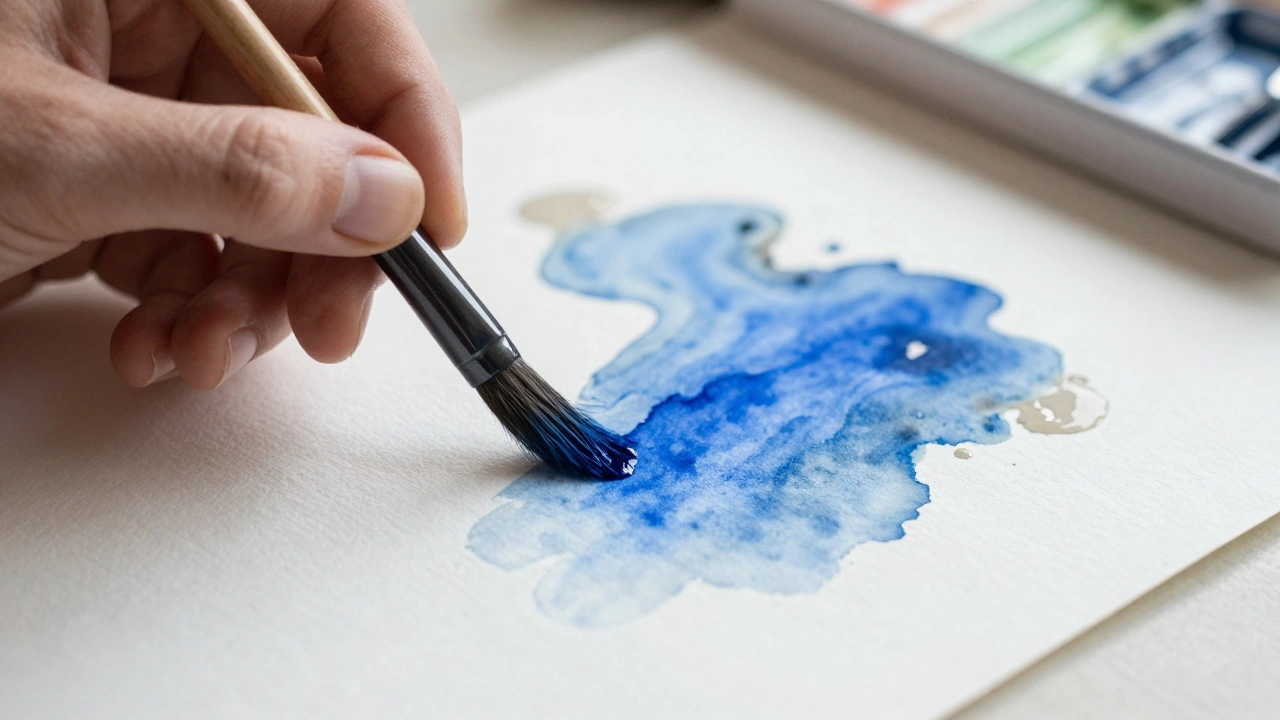Old prints hide in attics, thrift stores, and sometimes grandma's hallway. But before you write them off as dusty wall art, you might want to dig a little deeper. Some prints, once considered just cheap reproductions, have become hot tickets for collectors and art lovers.
So what drives the price? It's not just about age. The artist’s name can make a huge difference—there’s a world of difference between a print by Picasso and one from an unknown maker. But even among big names, not all prints are equal. Condition, rarity, how the print was made, and whether it has a signature or edition number all play a role. For example, even small nicks or fading can shrink the value big time.
If you're holding onto something and wondering whether you're sitting on a hidden treasure or just old paper, it pays to figure out what you've got. And trust me, the answer isn't always obvious—sometimes the most unassuming prints have the best stories and value.
- What Makes an Old Print Valuable?
- Spotting Common vs. Rare Prints
- Tips for Evaluating Your Prints
- Selling and Collecting Advice
What Makes an Old Print Valuable?
If you’re sitting there holding an old print, you’re probably asking, “Is this thing actually worth anything?” The answer depends on a mix of factors that collectors and dealers watch closely. It’s not about whether the print just looks nice—it’s way more practical than that.
- Artist’s Name: This one’s a biggie. Prints made or signed by famous artists—think Picasso, Rembrandt, Andy Warhol—often have serious value. Even not-so-famous artists can matter if they’re unique or influential in their space.
- Age of the Print: Older doesn’t always mean better, but some periods—like the 18th and 19th centuries—have prints with proven collector demand.
- Rarity: If a print is one of just a few left in the world, collectors will fight over it. Prints are often made in editions, so lower edition numbers (like 1 of 50) usually mean more value than those printed by the thousands.
- Print Method: How was it made? Hand-pulled techniques (like etching, engraving, or woodcut) are usually more valuable than mass-produced offset or digital prints.
- Condition: Small tears, stains, fading, and even bad framing can shrink a print’s worth fast. Collectors hate damage, so pristine condition is key.
- Signatures and Marks: A signature or special mark from the artist counts for a lot. Limited edition prints usually show numbering (like “6/50”), which adds value. Some historic prints may have printer’s marks, which are worth researching.
Curious how much these factors can swing the price? Here’s a quick look at some famous cases:
| Print Example | Year | Recent Auction Price |
|---|---|---|
| Picasso Linocut | 1962 | $67,000 |
| Rembrandt Etching | 1647 | $95,000 |
| Warhol Screenprint | 1972 | $25,000 |
If your art prints check some of these boxes, it’s time to get excited—or at least a little more curious about what’s hanging on your wall. Sometimes, people just have no clue until they bring a dusty frame to an expert.
Spotting Common vs. Rare Prints
Ever wondered why two old art prints at a flea market can have totally different price tags? Figuring out if you have a vintage print that’s rare or just something everyone’s grandma has is a big part of unlocking real value. Here’s how the pros do it.
First off, edition size matters a ton. Limited edition prints (like those numbered 7/100) are usually worth more than open editions, which were mass-produced. If you see a handwritten number and a signature, that’s a good sign. But check carefully—sometimes fake signatures or numbers get added after the fact. Compare yours against online auction records for the same artist or title.
Next, look at the printing technique. Lithographs, etchings, and screenprints can all be valuable, but some methods are easier (and cheaper) to mass-produce. Originals tend to show slight imperfections or texture—mass prints often look totally flat and shiny. Flip the print over and check for watermarks or special paper types; old, high-quality prints are sometimes on handmade paper.
- Common prints: Posters from exhibitions, modern reprints, works with printed (not signed) names, and editions in the thousands are usually much less valuable.
- Rare prints: Small edition numbers (often less than 100), artist’s proof (marked AP), signed by hand, and tied to well-known moments in the artist’s career.
| Type | Typical Edition Size | Value Potential |
|---|---|---|
| Open Edition Poster | Unlimited | Low |
| Limited Edition Print | 50–200 | Medium-High |
| Artist’s Proof (AP) | 5–20 | High |
Condition is another big deal. A small stain or faded ink drops the value in a snap. Serious collectors want prints as close to perfect as possible. And don’t forget artist popularity—a rare print by a little-known artist might still be hard to sell, while a common Picasso poster could fetch more just for the name.
Best tip? When in doubt, search auction sites like Sotheby’s or Christie’s for your old print. Seeing what similar pieces sold for can give you a real-life gut check on value.
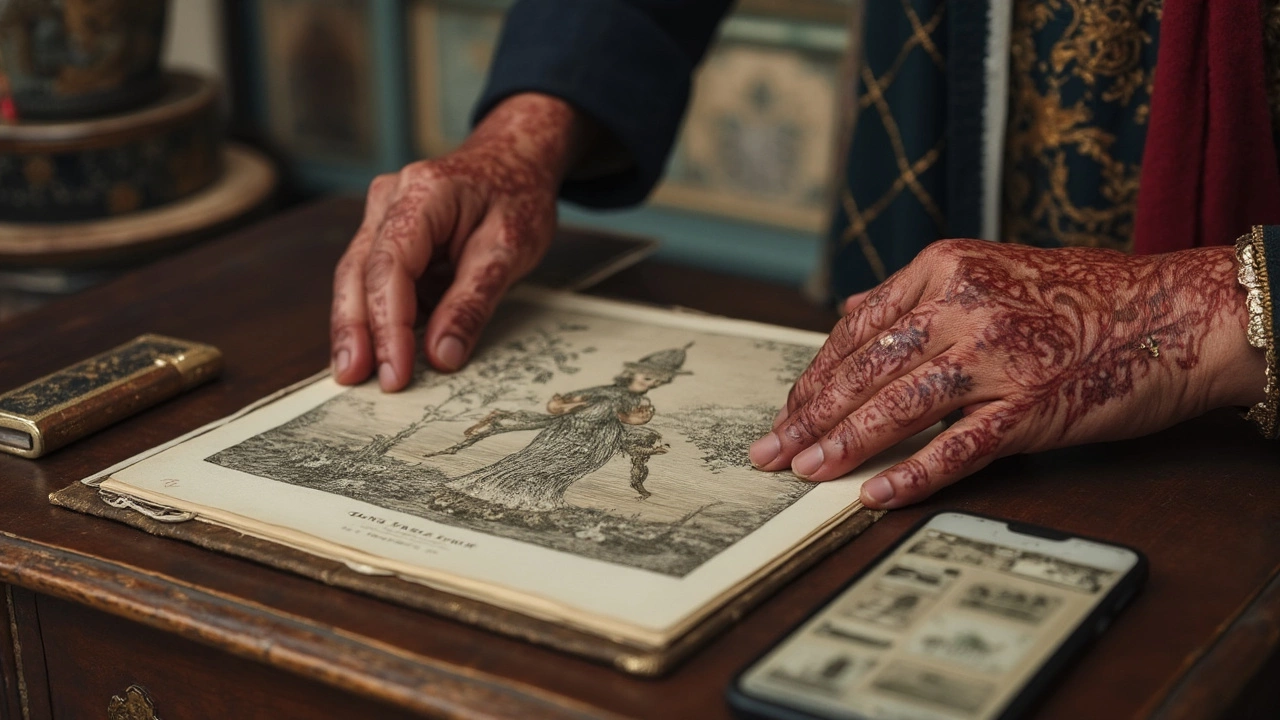
Tips for Evaluating Your Prints
If you want to know if your old prints are worth something, you'll need more than just a quick internet search. There are a few specific things to look out for that can totally change the game, and you don't need to be an expert to get started.
First, check for an artist’s name. If your print has a recognizable name—especially someone well-known in art history—pay extra attention. But don’t stop there. Look for a signature, which can either be hand-signed or printed. Hand-signed usually bumps up the value a lot, especially if it’s in pencil or ink directly on the paper rather than just in the print itself.
- Edition Number: If you see something like “12/100,” that means it’s the twelfth print out of a run of 100. Lower numbers or small edition sizes (for example, fewer than 50) are usually more valuable. Huge edition sizes? Usually less impressive to collectors.
- Print Type: Is it a lithograph, an etching, maybe a silkscreen? Originals like woodcuts, etchings, or lithographs made by the artist or under their watch are much more desirable than mass-produced poster prints. Sometimes you can spot this by running a fingernail over the lines—real etchings often leave a tiny indentation in the paper.
- Condition Matters: Fading, foxing (those weird little brown dots), tears, or stains take a big bite out of value, even on vintage prints. Collectors want clean, crisp paper. If yours looks rough, don’t try to DIY restore it—improper cleaning ruins art.
- Paper Quality: Thicker paper or special watermarks can mean it’s an original print. Flip it over and look for a watermark like "Arches France"—a favorite among famous printmakers.
Here’s a quick table showing what tends to lift or drop the value of a print for collectors:
| Factor | Effect on Value |
|---|---|
| Hand-signed by artist | Major boost |
| Small edition (under 50) | Increases value |
| Mass-produced poster | Lowers value |
| Excellent condition | Big plus |
| Tears, stains, or fading | Decreases value |
Interested in getting a real-world number? Try checking recent auction results online for the same artist and print type. Just remember, asking prices don’t mean much—look at what similar art prints actually sold for. If in doubt, reputable auction houses or art appraisers can help you nail down the true value, especially if it could be a big-ticket item. Don’t get swindled by free online quotes; most real pros will want to see the print in person.
Selling and Collecting Advice
If you think you might have valuable old prints, you want to act smart—nobody wants to get ripped off or miss out on a good deal. The first move is always research. Look up the artist, print title, and any numbers or markings online. Auction sites like eBay or dedicated art auction houses like Christie's and Heritage Auctions are super handy for finding real sale prices, not just wishful thinking.
Condition counts for a lot. Even if you spot a famous artist's name, water spots, folds, or sun fading can hurt your price. If you’re serious about selling, store your art prints flat, away from sunlight, and ideally in acid-free sleeves.
Thinking about selling? Here’s a basic checklist:
- Take clear, detailed photos (front, back, any marks or damage)
- Write down measurements, any writing or numbers, and the artist’s full name
- Get a rough value using sites like Artnet, Invaluable, and eBay’s sold listings
- For anything that seems special—think limited edition, signed, or pre-1950s—consider getting it appraised by a pro. Some certified appraisers even offer quick online assessments for a fee.
If you want to hang onto prints for collecting, focus on what you actually like, not just what’s trendy. Big names like Alphonse Mucha, Henri de Toulouse-Lautrec, or Andy Warhol never really go out of style. But there’s also a growing market for mid-century modern and even quirky old advertisements from the 1940s and 50s. In fact, a 2023 Art Basel report noted that prints as a category grew by nearly 10% in auction sales over the last year.
| Famous Print Artists | Recent Average Auction Price |
|---|---|
| Pablo Picasso | $3,000 - $250,000 |
| Henri Matisse | $2,000 - $45,000 |
| Andy Warhol | $10,000 - $600,000 |
One more tip: watch out for fakes or reproductions. Lots of prints look old but aren’t. Original prints usually show plate marks, edition numbers, or an artist's signature in pencil. If you’re not sure, ask someone reputable—in-person or online—before selling or buying. And if you ever feel uneasy about a deal, trust your gut.
